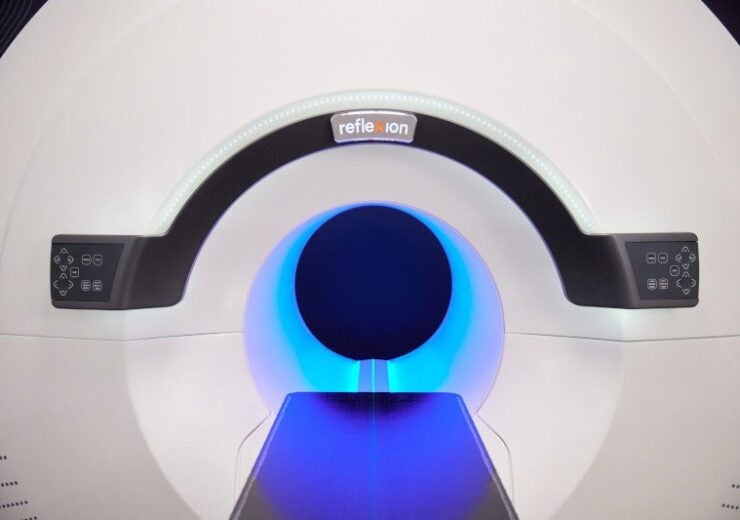SCINTIX is a radiotherapy that allows each cancer’s unique biology to autonomously determine the location and amount of radiation to deliver during actual treatment delivery and is delivered through the RefleXion X1 machine

The RefleXion X1 machine with SCINTIX biology-guided radiotherapy. (Credit: Business Wire)
RefleXion Medical has received the US Food and Drug Administration (FDA) marketing approval for its SCINTIX biology-guided radiotherapy to treat early and late-stage cancers.
SCINTIX is a radiotherapy that allows each cancer’s unique biology to autonomously determine the location and amount of radiation to deliver during actual treatment delivery.
The SCINTIX biology-guided radiotherapy was previously granted FDA Breakthrough Device designation for treating lung tumours and can detect and treat multiple moving tumours.
It is delivered through the RefleXion X1 machine, which combines positron emission tomography (PET) with a linear accelerator (LINAC) to track cancer’s motion.
The current FDA approval expands the RefleXion X1 into the only dual-treatment modality platform to treat patients with indicated solid tumours of any stage.
The X1 has an advanced anatomic modality that has been previously approved by the US FDA, for solid tumours located anywhere in the body.
RefleXion CEO and president Todd Powell said: “From its inception, the novel nature of SCINTIX therapy demanded that we fundamentally rethink how to design a machine capable of delivering cancer treatment to patients that were not considered candidates for radiotherapy because of the extent of their disease.
“Likewise, our regulatory pathway encompassed unprecedented hurdles as medical device and pharmaceutical teams within the FDA worked together to create a new classification regulation for this breakthrough device and therapy.
“With initial clearance for SCINTIX therapy behind us, we will begin full commercialisation and patient treatments in the coming weeks.”
The SCINTIX biologic modality tracks the motion of the tumour from all types of movement, including expected motion from internal processes and unexpected patient movements.
It was initially approved for use with the radiopharmaceutical fluorodeoxyglucose F 18, commonly known as FDG.
Prior to the treatment, the patient is injected with a radiopharmaceutical that interacts with cancer cells to produce emissions, and the X1 tracks the emissions to determine the target of radiation.
The crosstalk between the tumour and the X1 requires the system to rotate at 60rpm, which makes SCINTIX the first and only radiotherapy machine to spin at this speed.
The company intends to adapt SCINTIX therapy to work with the full spectrum of novel radiopharmaceuticals, currently under development for different cancer types.
RefleXion founder and CTO Sam Mazin said: “Autonomous radiotherapy was just a concept over a decade ago, but now for the first time in the history of cancer treatment, the individual biology of cancer itself guides its own destruction.
“Today, I want to acknowledge and thank the many talented people who have contributed over the years to translate SCINTIX therapy to the clinic.”
